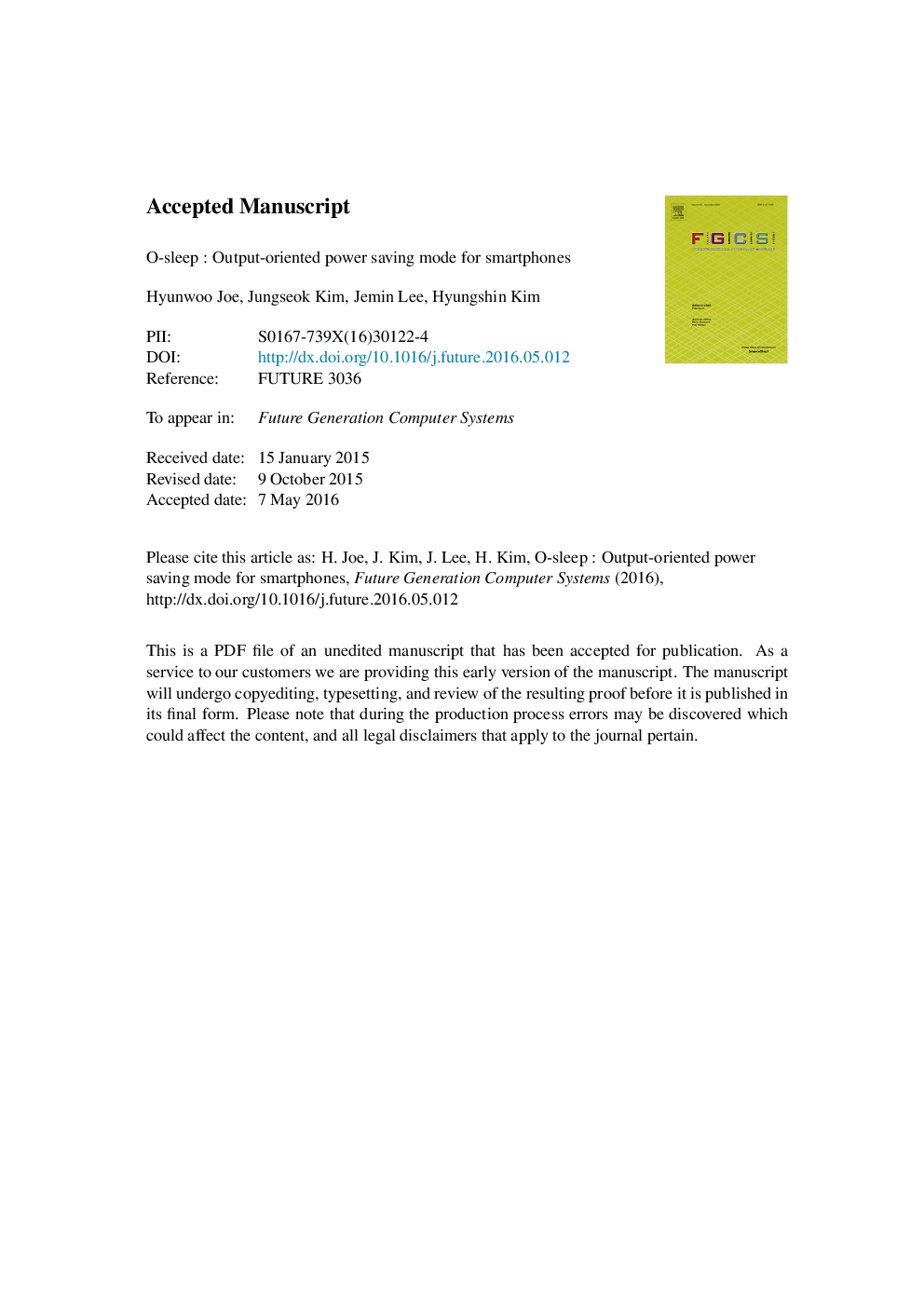| Article ID | Journal | Published Year | Pages | File Type |
|---|---|---|---|---|
| 4950228 | Future Generation Computer Systems | 2017 | 30 Pages |
Abstract
Fast battery discharge is still the most nerve wracking issue for smartphone users. Though many energy saving methods have been studied, still users are not satisfied with their phone's battery. Power management system provides low power mode when the phone is not in use for a long time. When the user is interacting with the phone, current system assumes the user is interactive and should keep the device in active mode. However, this is not true. After the user's interaction, the device processes the request and displays the result on the smartphone's output device. During this period, the user cannot see any meaningful information from the phone. In this paper, we propose a new low power mode where we put smartphone's output device into low power mode while phone is preparing result for the user. We named this as o-sleep, an output-oriented power saving mode. While a device is processing a user's request, output from the device may require preparation time. We consider the situation as the device's output idle time and put the phone's user interfaces into sleep mode while maintaining other subsystems in active state. To prove our concept, we have applied our technique onto various smartphone applications with varying operation environment. From the experiment, we found that the smartphone entered the o-sleep mode up to 58% of its total usage time in various test scenarios. Usability study supported feasibility of our proposed method.
Related Topics
Physical Sciences and Engineering
Computer Science
Computational Theory and Mathematics
Authors
Hyunwoo Joe, Jungseok Kim, Jemin Lee, Hyungshin Kim,
